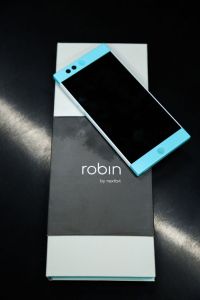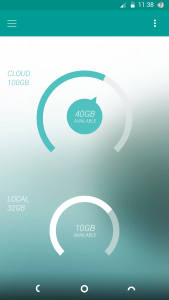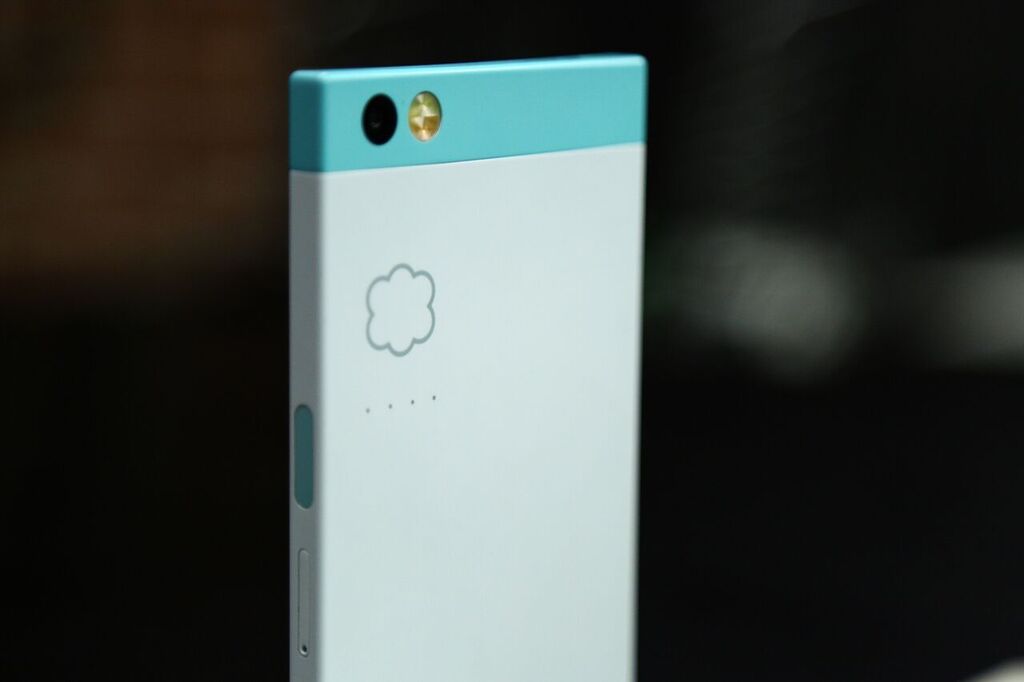And the heavenly hosts of mobile declared, “At last a phone that isn’t just a boring black rectangle.”
This smartphone has a Qualcomm Snapdragon 808, 3GB of LPDDR3 memory, Wi-Fi 802.11a/b/g/n/ac [2.4 and 5 GHz dual-band], with Bluetooth 4.0 LE, 4G LTE Cat 4, NFC support, USB 3.0 Gen1 SuperSpeed [5 Gbps] with Type-C connector…zzzz…..zzzzzzz……zzzzzzzzzzzzz…..
The Nextbit Robin isn’t about bleeding edge specs, it’s about a design that’s speakeasy levels of cool with software perks that aim to make you forget your phone isn’t infinite. It isn’t perfect, but this $399 unlocked Android phone is certainly something bold.
Pretty Things I Like
After raising $18 million from Accel and Google Ventures in 2014, Nextbit took the launch of their Robin “cloud-first” smartphone to Kickstarter, not because they needed the cash, but because they knew their device could turn heads.
From the couple of weeks I used this device in the wild, I can confirm. What people notice from close-up and meters away is the stylish, modular design of this device.

Robin’s polycarbonate shell feels uniquely high-quality. Weight and heft play a major role in giving the 5.2 inch screen device a solid build that feels strong in my hand and refreshingly less slick than the metal and glass-backed phones I’m used to.
The vibrant mint color of the review unit I tested (it’s also available in midnight) pops in a way that isn’t anywhere near as garish as the color palette of Apple’s iPhone 5C line and is, in general, one of the few colorful mobile devices I’ve seen that’s well-designed enough to get away with it all and still look professional.
The skin that Robin is running is pretty much stock Android with a monochromatic twist that ties it together with the design of the hardware. Widget-free pages of grid-arranged circular apps give Robin a bit of an iOS-feel on its home screens, but the phone also boasts a handful of UI bells and whistles that give it an aesthetic unique to Robin that look great on the device’s 1920×1080 5.2 inch screen.
The Capacity To Forget
The blistering frustrations of inadequate storage space on a phone are pretty difficult to replicate in the course of a few weeks. Curtailed capacity is at its worst when you’re left without enough space to store a photo you snapped at a concert and have to work your way through your apps to see what’s superfluous before you drag and delete. Repeat that experience a few hundred times and only then can you truly understand the pain of a 16GB iPhone user like myself.

Robin users are unlikely to have to endure this brand of pain thanks to the “cloud-first” phone’s hallmark feature: smart storage. This setting allows you to expand the flexibility of Robin’s 32GB of onboard storage by automatically backing up your apps and photos to the included 100GB of cloud space.
With your data constantly backed up, Robin users are then left to go about their business and forget that storage is something most other smartphone users have to worry about. When you eat through your onboard storage and are approaching a wall, Nextbit sorts through your least-used apps and “archives” (read: deletes) them (unless you specifically designate the app not to be archived). Full-resolution photos are also archived, but in a pretty pleasant manner which still allows users to access phone-resolution copies of the images on their device.
Given the breach-heavy age of cybersecurity we live in, talk of cloud storage often brings about conversations regarding information security. Nextbit securely transmits and encrypts user app and photo data to be backed up on its servers. The company told me that app login credentials are never included with these backups so if worst comes to worst, hackers still won’t be greeted with the master key.
Pretty Things I Don’t Like
For how beautiful the device really is, there are a few “design-first” quirks that can become a little annoying with frequent use.
Chief among these is the recessed sleep/wake button on the device’s right side. Damn is this thing unnecessarily tough to press. All of this would be fine if the device had a physical home button to wake it, but instead you have a bottom speaker that looks like a home button but just isn’t one no matter how many times you accidentally press it wishing it was.

The skinny sleep/wake button also sucks because, unlike the fun little volume button paint drips on the other side, it’s been made completely flat to accommodate a fingerprint sensor that honestly doesn’t work all that well.
Also, as much as I love the rectangular design of the phone, I will say the hard-cornered device can get a bit uncomfortable to hold during lengthy browsing sessions.
The Bottom Line
I really think the Robin has enough style and familiarity to be the tempting force that moves some lifelong iOS users towards an affair with Android.
Robin is refreshing in that it gives you the chance to forget about one of the major physical constraints of smartphones, limited storage. Potential customers looking to order the GSM model available on its site today (CDMA comes in April) need to ask themselves where design falls on their list of needs. The cloud storage is nifty, but the real star of this $399 Android phone is the feeling you get when you hold it in your hand.
While the design is beautiful, the hardware performance is mostly average. The 13MP rear camera and 5MP front camera are adequate. Despite being super visible, the dual front speakers pack just as much power as your average phone speaker does. The device is generally zippy but slowed a bit when the going got rough and resource-heavy.
Despite the occasional hardware quirk, the Nextbit Robin really is something special. It’s been a long wait for early-backers of the Kickstarter campaign and I certainly doubt many of them will be disappointed with the device when it lands at their front doors today.